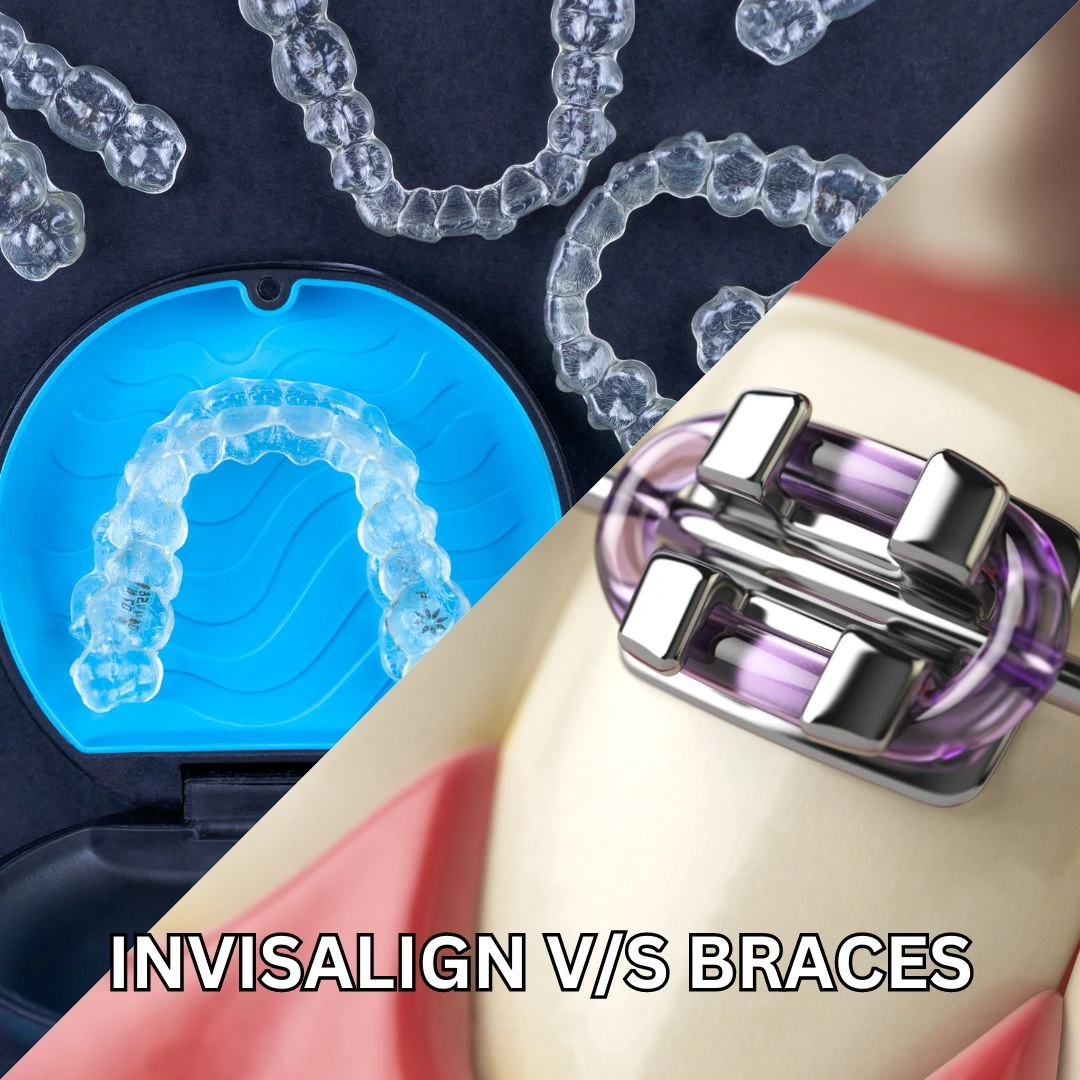Malocclusion is a common oral health concern that can range in severity from very mild to significant. For many years, the primary treatment was traditional braces. However, the field of orthodontics has experienced significant growth over the years. Now, there are two primary options:
- Traditional braces
- Invisalign clear aligners
Invisalign vs Braces both options have advantages and disadvantages, which can make it difficult to decide between the two. In this article, we’ll take a closer look at each option to help you with your decision process.
What is Invisalign?
Invisalign is a discreet alternative to traditional orthodontic treatment. It consists of a series of clear, removable aligners that put even pressure on the entire arch. The pressure gradually shifts teeth into their appropriate positions.
The aligners are custom-made to fit snugly on the teeth and are virtually invisible. This is especially popular among adults and teens, primarily because treatment is comfortable and convenient compared to traditional braces.


What are Braces?
Braces have been used for many years to resolve tooth misalignment. This treatment option involves the placement of metal or ceramic brackets on the teeth with an archwire running between them. Often, rubber bands are used to hold the jaw in place. Braces put continuous pressure on the teeth to shift them into place. While this treatment is highly effective, they are more noticeable.
Cost of Invisalign vs Braces
Orthodontic treatment costs vary based on the type of treatment, length of treatment, additional concerns, experience/expertise of the orthodontist, and more. Most orthodontists offer financing options and flexible payment plans to make treatment easier to access for all patients.
The cost of Invisalign treatment ranges from around $1,200 for very mild cases to $8,000 for more severe cases. The cost of traditional braces ranges from around $3,000 to $7,000.
Invisalign vs Braces: Which is Better
Basis | Invisalign | Traditional Braces |
Appearance | Aligners are almost invisible, even at close range | Brackets/wires are visible, even from a distance |
Cost | $1,200 to $8,000 | $3,000 to $7,000 |
Comfort | Aligners are made of clear, smooth plastic- which improves comfort | Brackets/wires often cause tenderness and may cause mouth sores |
Treatment Time | Average of 12 to 18 months | Average of 12 to 24 months |
Convenience | Change aligners every 1 to 3 weeks based on treatment plan | Must visit the office every few weeks for adjustments/tightening |
Reasons to Work with a Skilled Orthodontist
There are several reasons you should choose to work with a skilled orthodontist instead of a general dentist to resolve your malocclusion, including:
- An orthodontist can accurately diagnose your issues
- An orthodontist can create a customized treatment plan to resolve your issues
- An orthodontist has the expertise to monitor your progress and can adjust the plan as needed
- An orthodontist can ensure the best possible outcome
Conclusion
Both Invisalign and traditional braces are effective for resolving mild to moderate dental malocclusions. Both have their advantages and disadvantages. While you can consult with an orthodontist to learn more about each option, the decision is ultimately your own. You must choose your treatment at Tamarack Hills Family Dentistry based on your needs, lifestyle, and budget.
Invisalign vs Braces FAQs
If you have questions or concerns about your orthodontic treatment, your orthodontic team will be glad to help. They are highly trained and skilled in this area and will be able to provide you with the answers you need to make treatment more understandable.
Treatment time primarily depends on the severity of the misalignment. However, the average treatment time is slightly faster with Invisalign. On average, Invisalign treatment takes 12 to 18 months and, in some cases, can take as little as 6 months. However, traditional braces often take 12 to 24 months, sometimes longer.
The average cost of traditional braces ranges from around $3,000 to $7,000, depending on several factors including the severity of the misalignment. The cost of Invisalign is comparable to traditional braces. In very mild cases, the cost may be lower for Invisalign, while it may be a bit higher for more severe cases.
Dental insurance often covers a percentage of treatment, especially for pediatric and teen patients. However, if you don’t have dental insurance, most orthodontists offer financing and flexible payment plans to make treatment more affordable.
Patients may experience some discomfort when first getting braces and after adjustments. In some cases, patients experience ulcers and irritation on the tongue, lips, and cheeks, as well as jaw soreness. These issues are easily managed with orthodontic wax and OTC pain relievers.
The most painful part of getting braces is the initial placement. Some patients experience some discomfort following adjustments- but it’s usually easily controlled with OTC pain relievers and at-home remedies.



